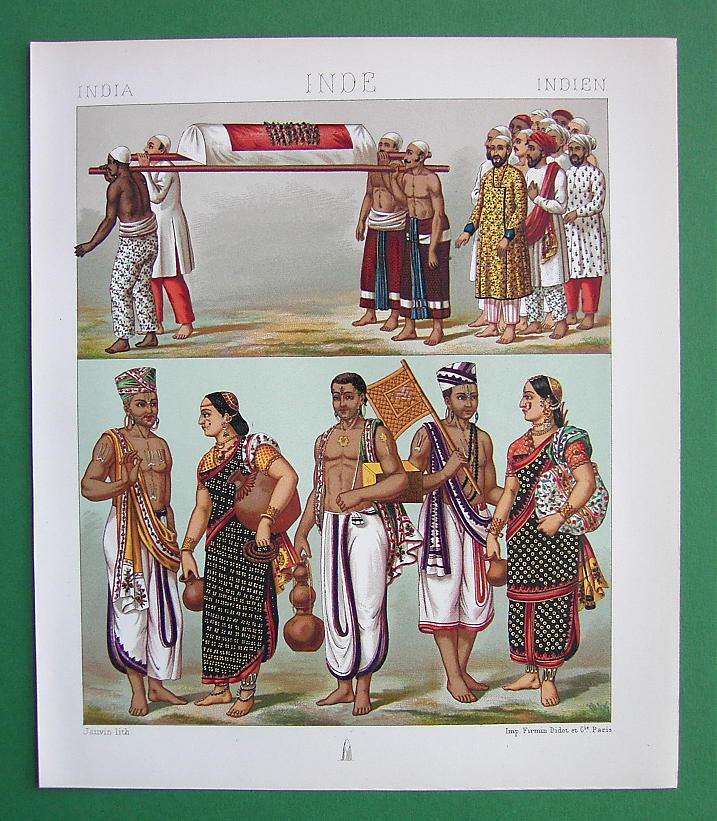

Costumes and dresses of India, 1888
Source: hebay, Nov. 2005
"Legend: Fig. 1. Burial of a Moslem, 2,6. Istrivechnou Brahmin, an official in the Vishnu pagodas and his wife - Vishnu sect, 3. Wife of Brahmin astrologer, 4. Brahmin Tattouvadi - Shiva sect, 5. Pauper, Sattania caste - Vishnu sect.
The Hindu population of South Asia comprises about 2,000 castes whose
members wear clothes and ornaments that clearly indicate their caste.
Here are some of the principal features of upper-class Hindu and Muslim
dress: Men's costumes consisted of the jamah, a long-sleeved coat
that reached to the knees or below and was belted in with a sash,
and wide trousers known as isar. These garments and the farji, a long,
gownlike coat with short sleeves, which was worn by priests, scholars,
and high officials, were made of cotton or wool, silk being forbidden to
men by the Qur`an. Somewhat modified, these traditional styles continue
to be worn by upper-class men of Pakistan and Bangladesh. Women's garments,
dictated by the Muslim conquerors, consisted of wide-topped trousers snugly
fitted around the calves of the legs, a long shirtlike garment, and
a short, fitted outer jacket. Silk was not forbidden to women; and highborn
women, forced to spend their lives in seclusion, devoted much time
and money to their costumes. The Mughal emperor Akbar's Rajput wives, inspired
by the profusion of luxurious fabrics available in India, designed
a graceful new style of dress, which Muslim women adopted forthwith. This
costume consisted of an open-front pleated skirt, or ghaghra,
worn with a long apronlike panel over the front opening, and a short-sleeved,
breast-length blouse called a coli. The ghaghra and coli continue
to be basic elements of Muslim women's dress, the loose front panel replaced
by the traditional sari, which is worn as an overgarment, one end
draped around the hips, the other carried up over the shoulder or head."